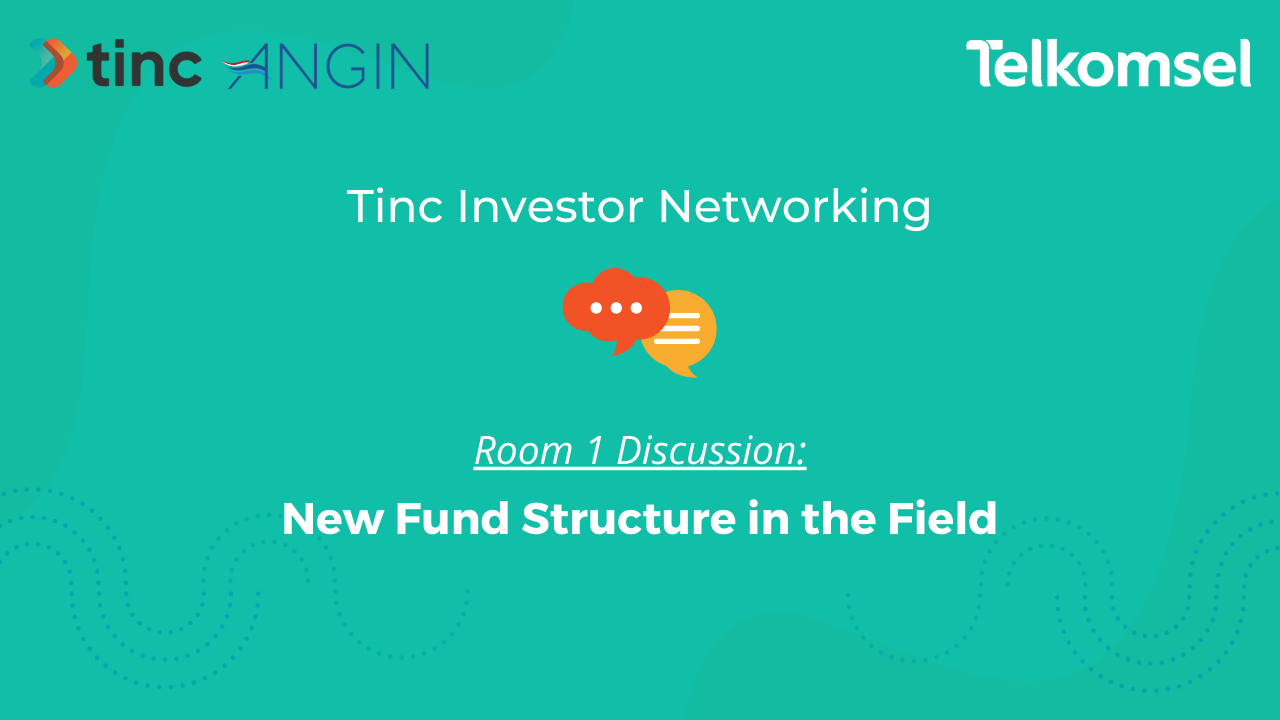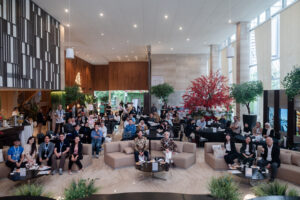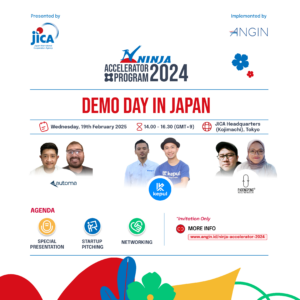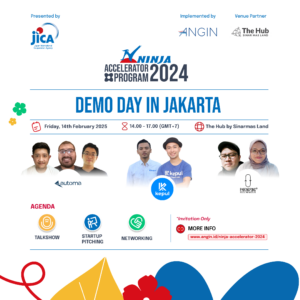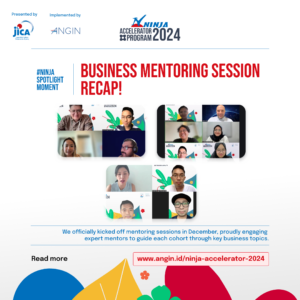This article is written based on the discussion note on Tinc Investor Networking.
The Rising of New Funds
Indonesian startup ecosystem and venture capital industry has been growing for over 10+ years. Despite the economic slowdown due to the pandemic, the Indonesian Venture Capital and Startup Association (Amvesindo) data show that US$1.9 billion in capital has been raised by 52 start-ups in Indonesia as of September 2020.
The association expects the year-end figure to reach US$2 billion, which would be lower than last year’s $2.9 billion in capital raised by 113 start-ups. At the same time, VCs’ assets rose 15.9 percent year-on-year to Rp 18.9 trillion ($1.3 billion) as of September compared to Rp 16.3 trillion over the same period in 2019, according to Financial Services Authority (OJK) data [1].
According to data from DealStreetAsia, Indonesia absorbed the biggest share of the $2.7 billion in fundraising deals booked in Southeast Asia in the second quarter of 2020 at 45.8 percent. Singapore came second with 33.2 percent of the deals, while Vietnam followed with 7.9 percent [2].
With the room for growth, the VC industry is still in its infancy stage whereas the th industry emerged around 2010. Currently there are Misalignment of incentives, and too often an intent to control the venture’s direction because of immaturity of the ecosystem across the investor spectrum. There are also less adequate models of business wherass the country’s well documented talent paucity generates too little. With that being said, venture capital structures have also grown to adapt to be able to support the needs of the market.
More foreign investors are coming to Indonesia and applying several new approaches, strategies, and structure to better support the market opportunity. Existing VC structures are not able to fill the gap existing in the ecosystem, hence new structures are needed to address the financial gaps like venture studio funds, revenue share funds, corporate venture capitals (CVCs), Angel Investment Vehicles, for example Beacon Fund, Founders First Capital Partners, Antler, and New Energy Nexus, etc.
Increasing Trends: Corporate Venture Capitals
Structures like corporate venture capital in Indonesia predominately sought funding from local investors. According to Badan Koordinasi Penanaman Modal (BKPM) or the Indonesian Investment Board data estimated foreign investments (Foreign Direct Investment) to the digital sector until January 2020 was ke sektor around $1,3-2,4 billion or about 15%-20% from total foreign direct investment that came in amounting of $9-12 billion each year [3].
With the room for growth, more CVCs are fundraising from foreign investors. State owned Bank CVCs such as MDI Ventures, Mandiri Capital Indonesia (MCI), and BRI Ventures are leading the trend. On the other hand, family backed investment arm such as Prasetia Dwidharma is focusing on deploying investments to startups with potential strategic alignment with their business, whilst also stepping in as venture partner in state owned CVCs such as MDI, where Arya Setiadharma (CEO of Prasetia Dwidharma) act as a venture partner since 2019. By accessing foreign investment and synergies with other family offices investment arm, an increase of activity of investment should follow.
In comparison, in the United States, Corporate VCs as a group were involved in 23 percent of all investment deals made in external startups in 2018 [4]. Pegasus Tech Ventures partner, Justin Patrick who participated in the discussion shared;

New Breed of Investors Coming In
We have seen new structures of funds (not the typical LP/GP structure). We have seen CVCs and we are seeing more experienced entrepreneurs venturing to build a small fund and act as catalysts such as Init-6 Fund and Kopi Kenangan Fund. These news structures will also affect the different fees and structuring in the fund, especially when it comes to the different fees and structuring between early and growth stage funds.
Capital requirement is very different from pre series to growth stage. Justin Patrick illustrates that in Indonesia, seed round of $ 1 million size of fund can deploy to up to 20 investments. With a Series B round with the size of $ 20 million, the participating General Partner (GP) needs a fund size of $ 200 – 300 million.
However, Sagar, the ex-founding member of IWEF and the moderator of the discussion mentioned that GP also has different competencies, thus the said structure is not always what we see in Indonesia and arguably not always the most applicable structure.

Talent Investing Funds
We have also seen talent investing funds in the start up industry such as Antler, New Energy Nexus, and TMI with tinc as their accelerator counterpart under the Indonesian biggest state owned telecom company, Telkomsel. Their strategy also includes investing in promising talents however, the SVP of TMI, Andi Kristianto shares a concern around talent paucity in the market thus hindering them to deploy available capital. He stated that there’s a need of supporting and securing the sustainability of the idea seeded from incubators or accelerators.

Venture Studios
With that being said, the need for a venture structure that provides capacity building support and management is greatly needed. That’s why another structure that is also becoming much more popular is Venture Studios, which is a new emerging innovation in the field of venture capital. It’s a very close structure to the high-touch venture-capital model, which follows a concentrated portfolio strategy and provides beyond capital support, primarily value-added services and human capital.
The structure show promising future due to the three distinctive characteristics which make it attractive which are
- Increase ownership in the venture
- Increase participation in the enterprise, and hence
- Increase the chances of success. The exit rate is higher in studios (~ 35%) than in accelerators (~ 20%), which seems to confirm that a venture created by a studio fails less often than any other venture. According to the GSSN, a studio startup can achieve TVPIs of 10 [5].
Aside from increasing the success rate, there is a high opportunity to increase Impact. Building tech-ventures in the impact spaces are generally ignored by tech ventures and entrepreneurs, as they are still catering to the top 1% of the population. The venture studios allow these impact driven businesses to grow. In the discussion, Sagar mentioned several types of venture studios and potential structures or model [6]
Types of Venture Studios and potential structures and models
- Internal Ideas and team: The studio team comes up with an original idea to build a venture.
Model: VC Fund structure, Concentrated portfolio, and VC High-portfolio support - Investing and building with a talent/founder: Venture Studio acts like a founder or supporting-founder (Chameleon) to construct the venture from scratch.
Model: VC Fund structure, Concentrated portfolio, and VC High-portfolio support - Cross-border replication: The studio replicates ventures from one geography to another by creating a joint venture with the parent company and investors.
Model:
(i) Venture Studio creates a new entity or SPV, which splits equity with the parent company and any new investors if able to onboard.
(ii) The money from investors and IP, money, and other resources from the parent company will kick-start the operation.
(iii) From there on, Venture Studio takes the ownership of contextualizing the product, hiring & managing the talent, finding product-market-fit, GTM fit, and, most importantly, running the core business. - Corporate venture studios: Venture Studio sees itself as an extension of corporate-innovation and acts explicitly as corporate-venture-studio.
Model:
(i) Venture Studio identifies potential clients and goes with a proposition to build a venture for them, which is strategically aligned to their core business or operation.
(ii) Venture Studio expects a certain amount of capital infusion initially, for which the corporates enjoy a healthy equity percentage. The venture will be built from scratch by Venture Studio.
Looking to the Future
The venture capital industry in Indonesia is still evolving and growing. We have seen positive movements and an increase of interest from foreign and domestic investors, as well as increasing capital commitment to Indonesia startup ecosystem.
New generations of investors are taking up the space led by investors with different backgrounds, bringing in new fund approaches, structures, and models. We see CVC, entrepreneurs backed funds, and venture studios models emerging in Indonesia with a promising foundation.
We see this as a positive trend of diversifying support systems for entrepreneurs to grow. With these new structures, it will eventually provide more entrepreneurs access to capital beyond just financial capital but also intellectual and social capital. We are confident to see more financial instruments in the future beyond equity investments, such as venture debts or syndication, to be able to have more flexibility in deploying capital.
End of article.
Participating investors in the discussion:






James Prananto
Co-Founder & CBD
Kopi Kenangan & Kenangan Fund
John Lotto
Investment Manager
C4D Partners
Justin Patrick
Venture Partner
Pegasus Tech Ventures
Maria Natashia
Investment Manager
PT Prasetia Dwidharma
Yudi Tandi Anugrah
Investment Manager
Kejora-SBI Orbit
Andi Kristianto
SVP Corporate Strategy and Strategic Investment, Telkomsel
This article is brought to you by:
Writer
Moderator



